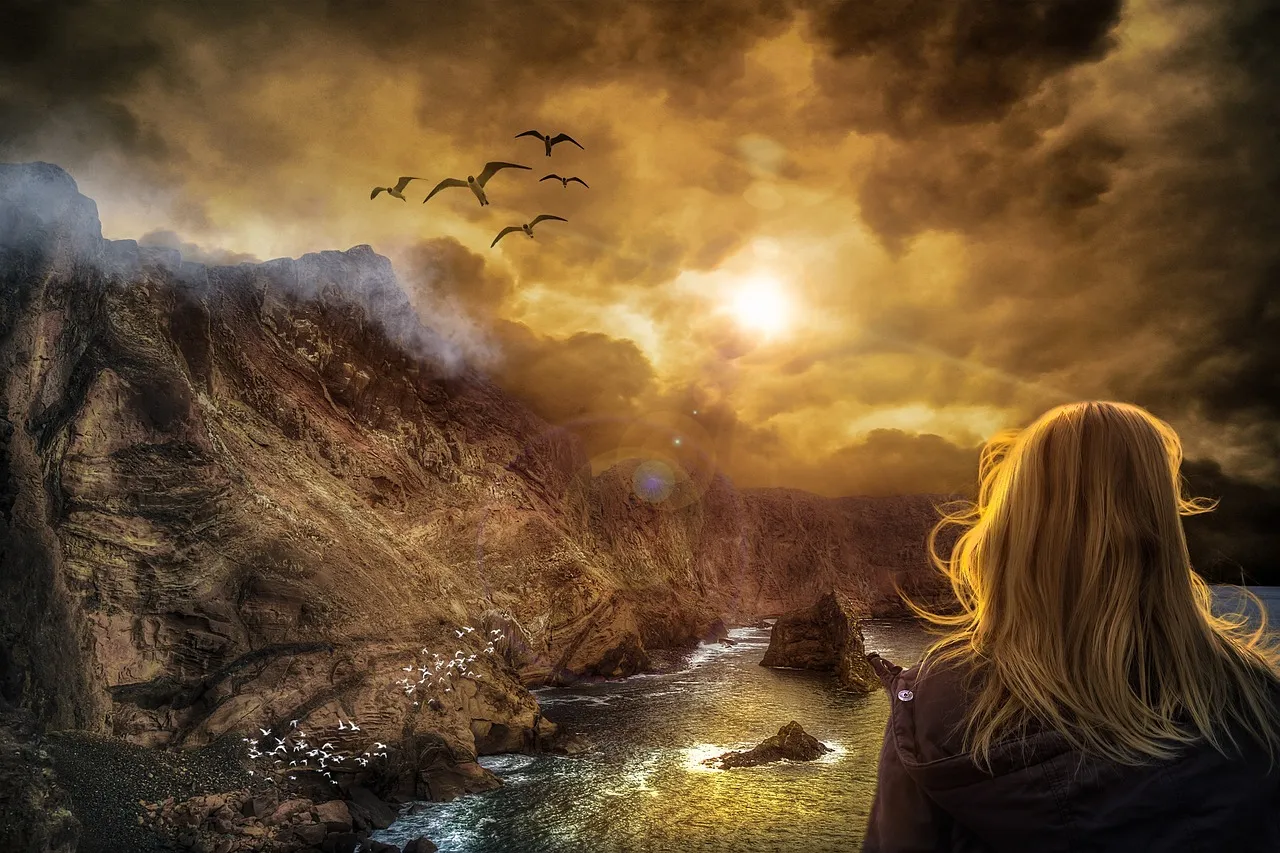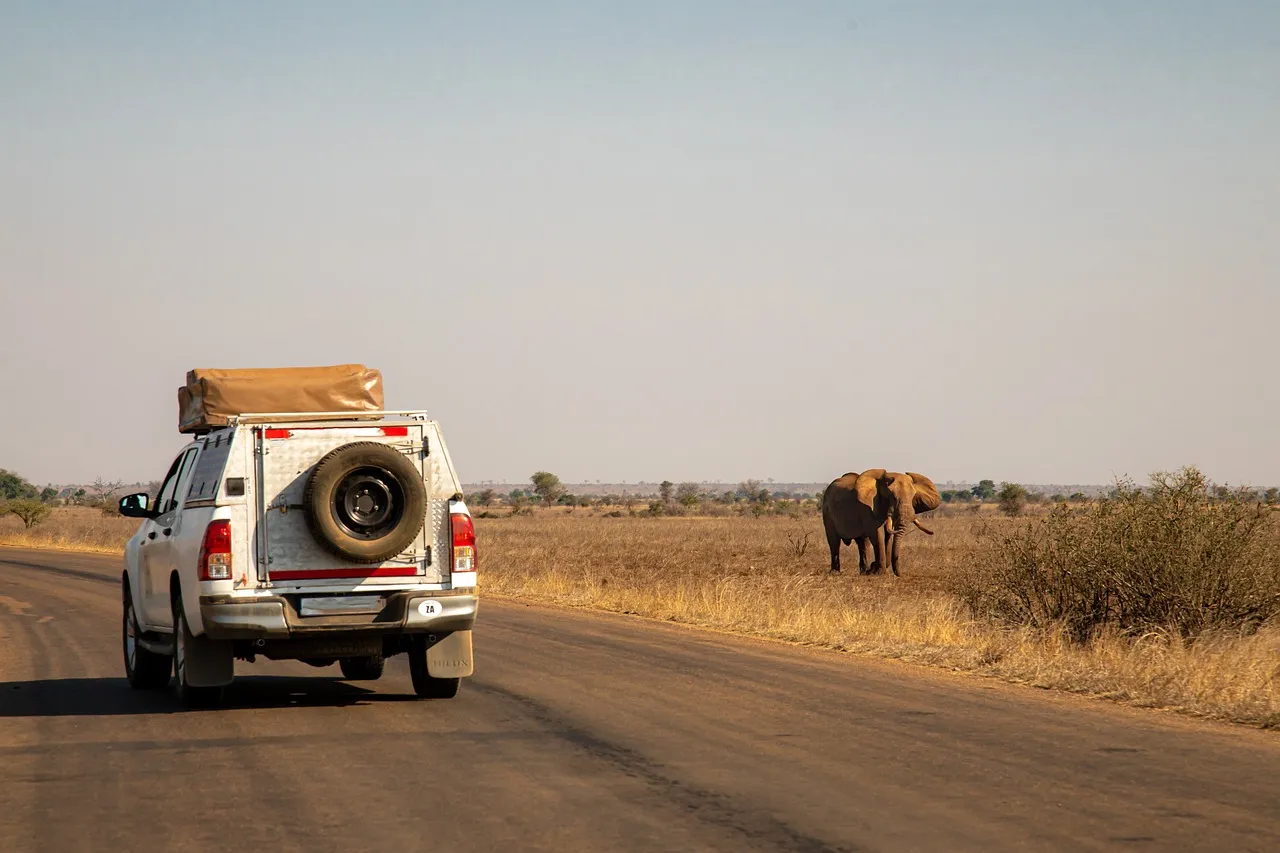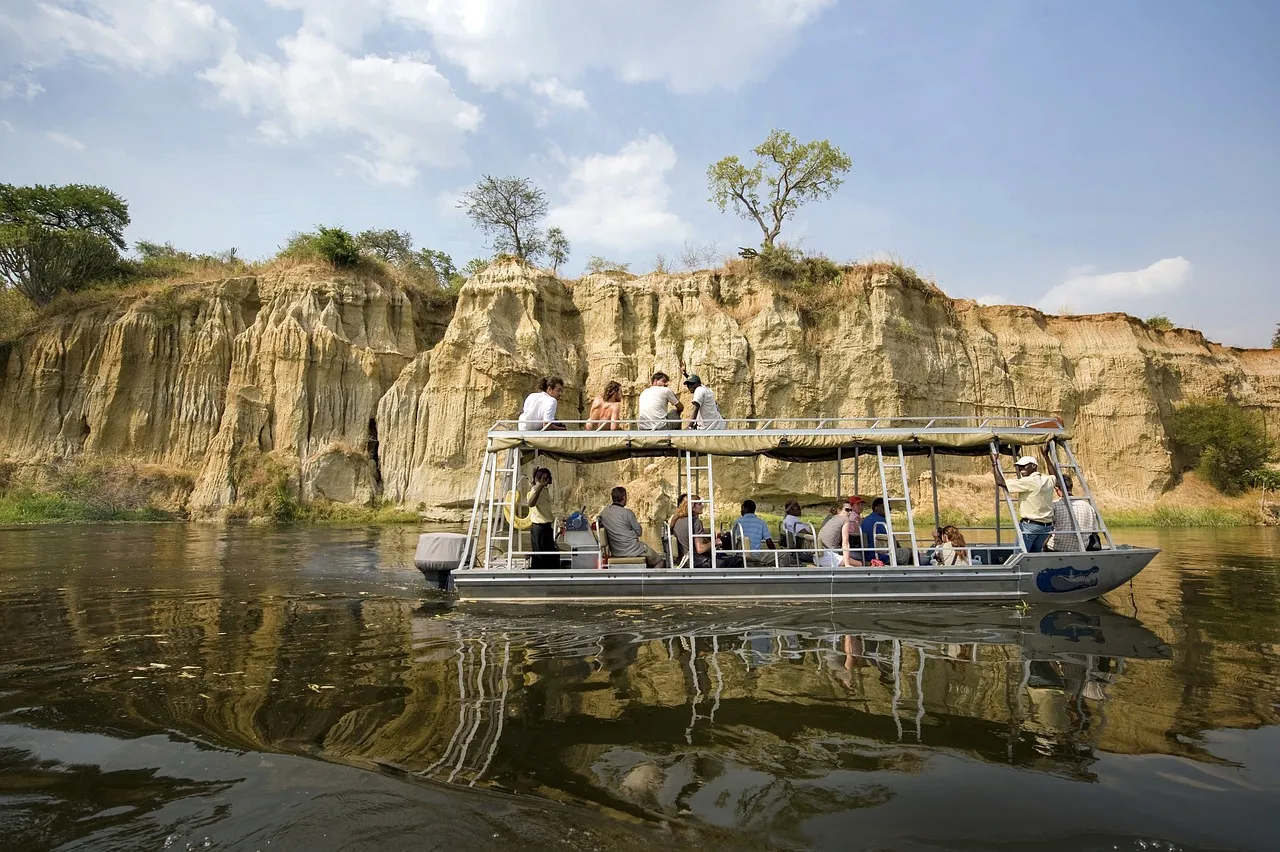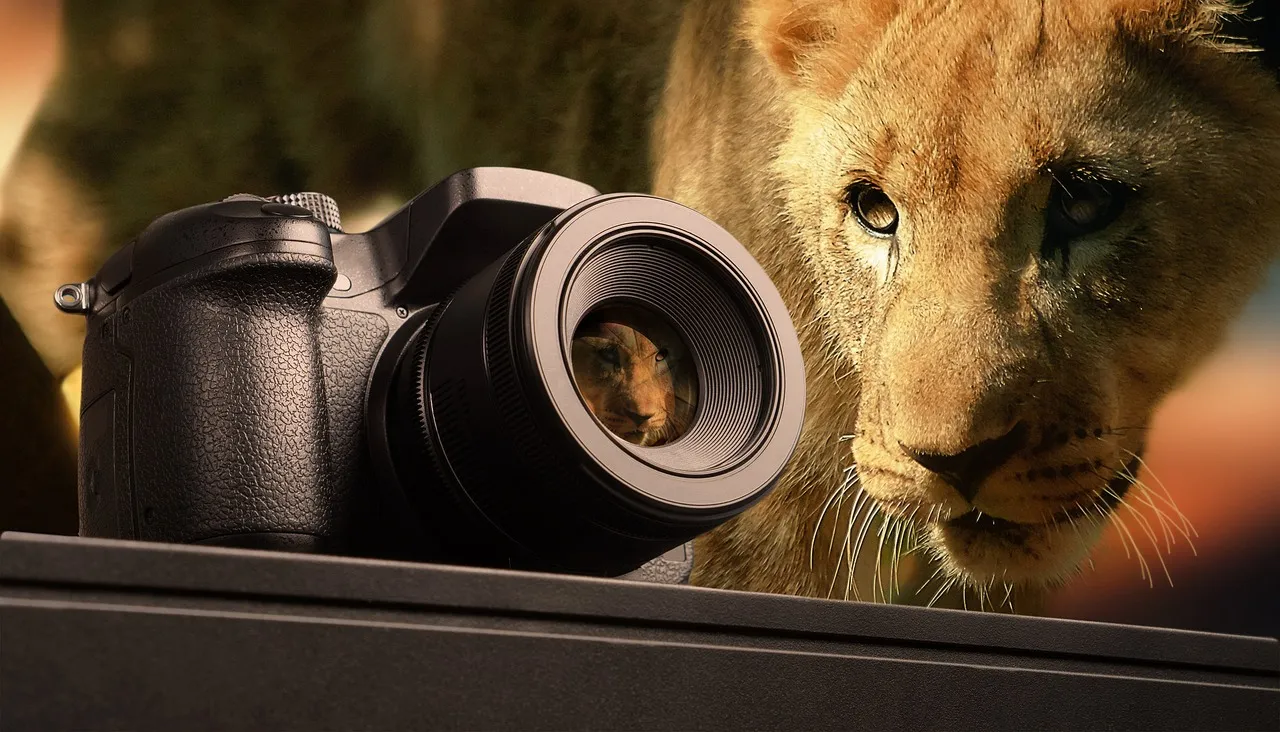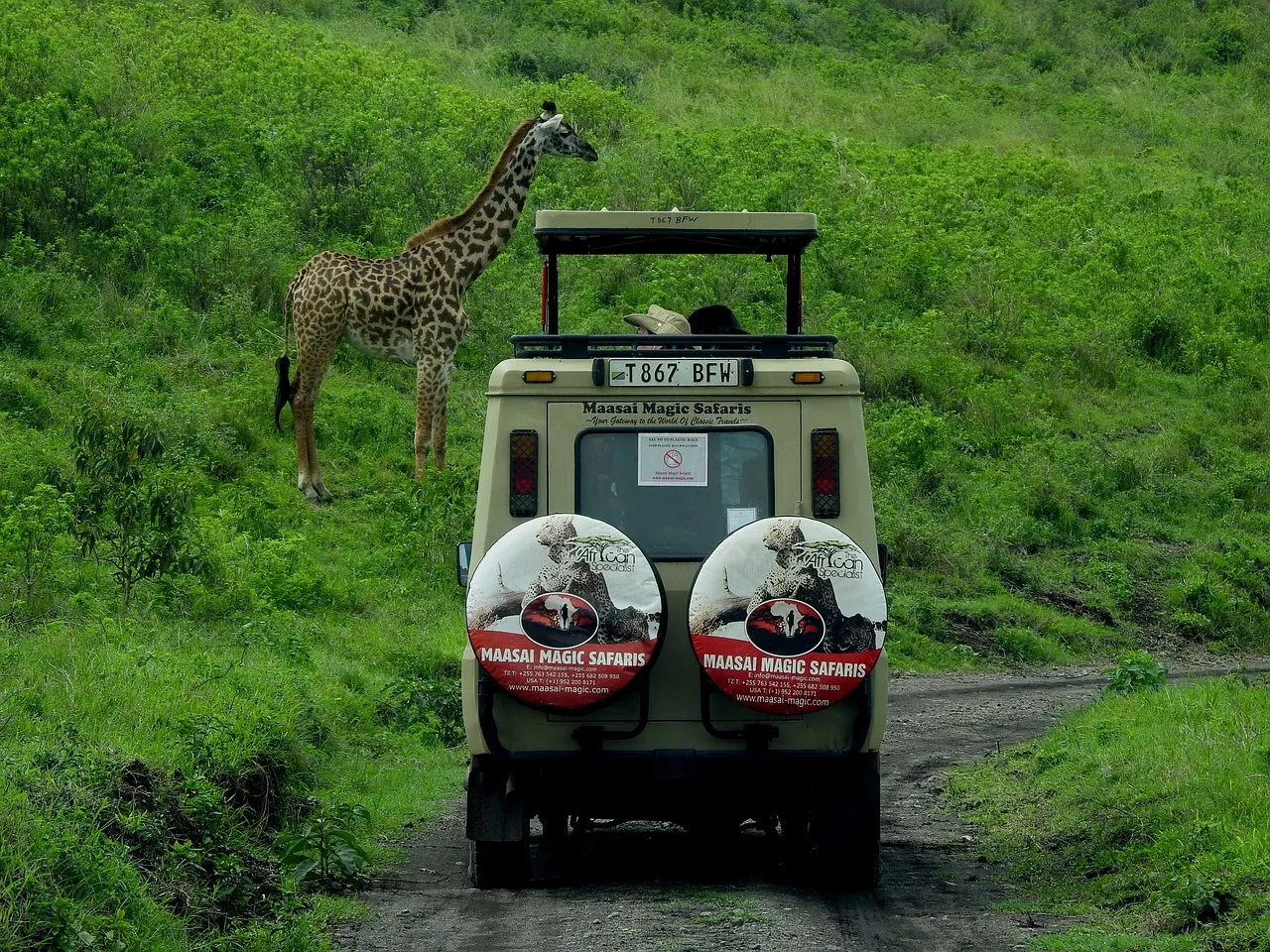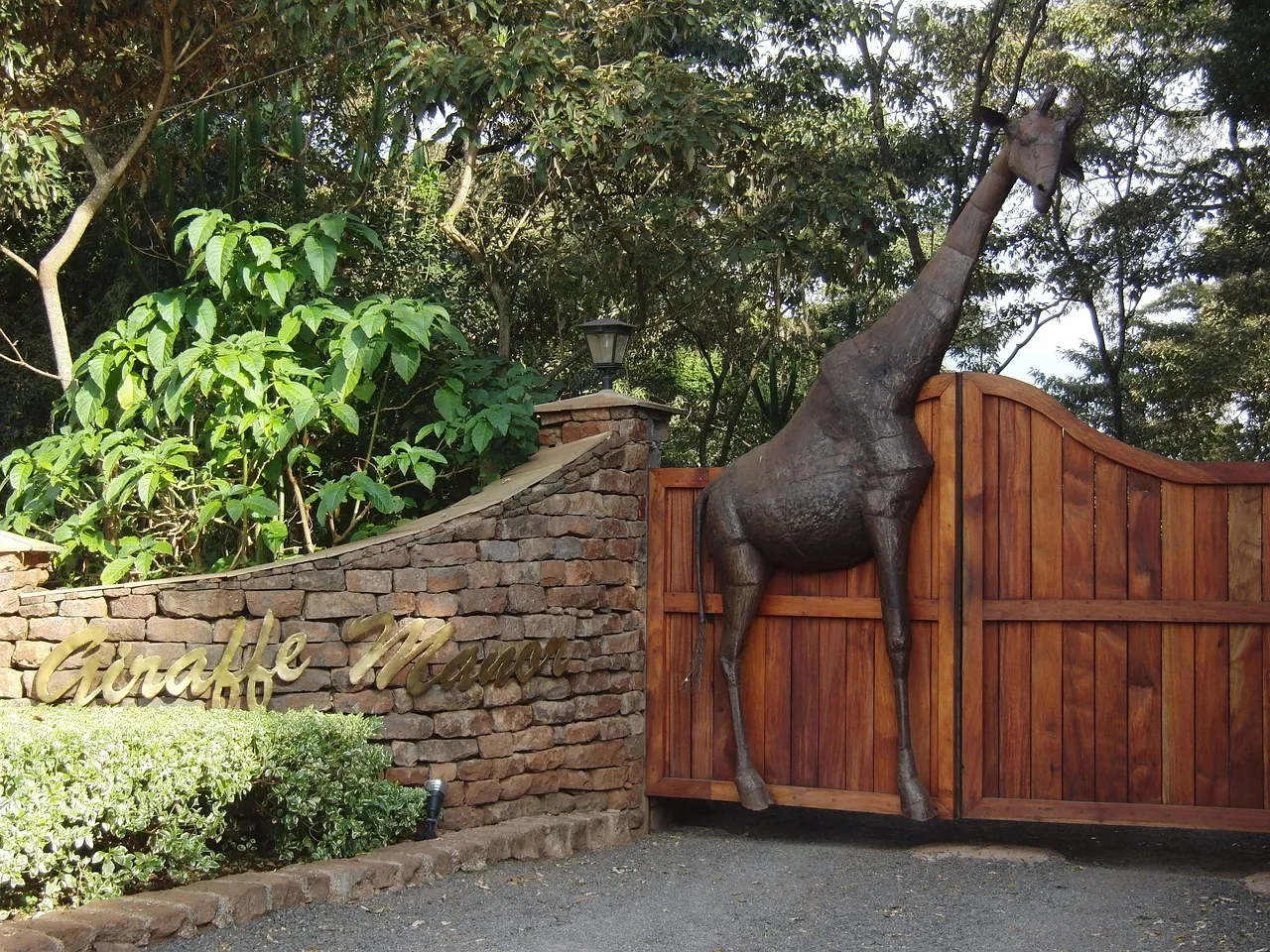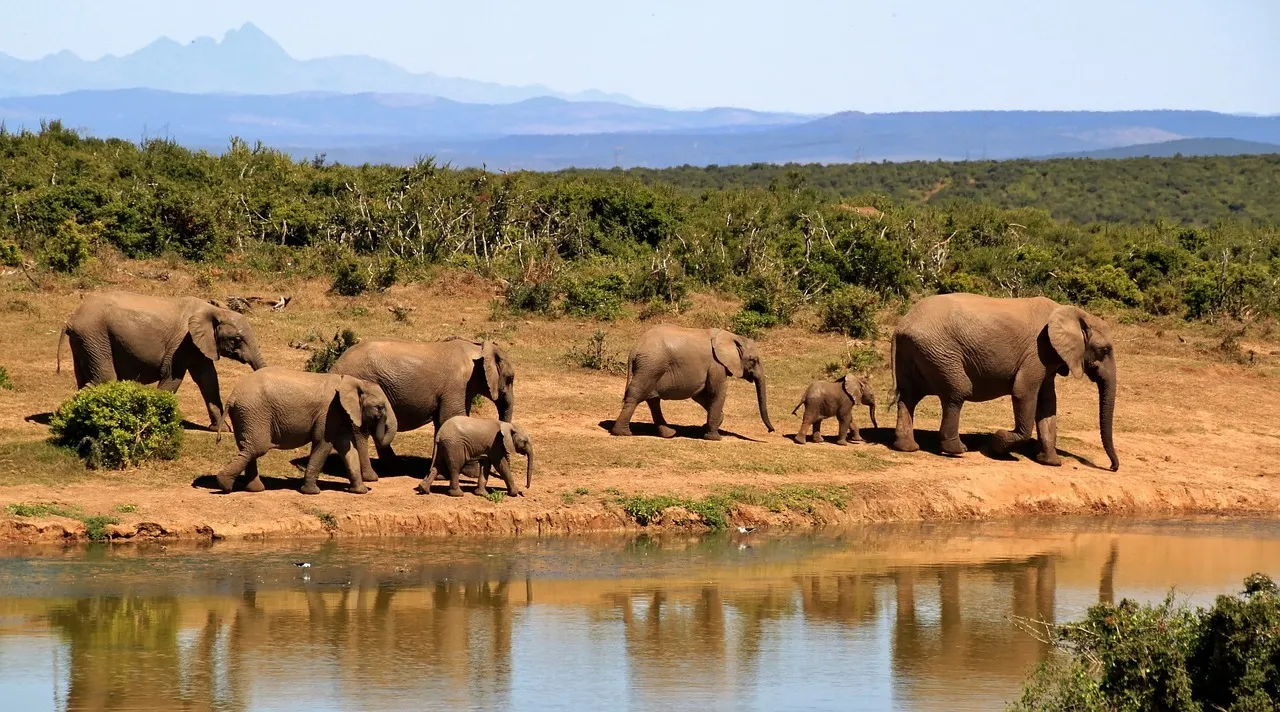Embarking on a wildlife safari is an exhilarating journey into the heart of nature, where every rustle in the bushes and distant call of the wild beckons you into a realm of breathtaking biodiversity. Diverse wildlife safaris offer a kaleidoscope of experiences, from the African savannah to the lush rainforests of South America. In this exploration, we traverse the globe to unveil the wonders of diverse wildlife safaris that promise encounters with creatures great and small.
Diverse Wildlife Safaris
1. African Safari Adventure
Unlocking the Secrets of the Serengeti:
An African safari is a quintessential wildlife experience, and the Serengeti National Park in Tanzania stands as an icon of untamed beauty. The annual Great Migration, where millions of wildebeest and zebras traverse the plains, is a spectacle that defines the Serengeti. Witnessing the circle of life unfold amid predators and prey is an awe-inspiring adventure that showcases the raw power and resilience of Africa’s wildlife.
Meeting the Big Five in Kruger National Park:
South Africa’s Kruger National Park is a haven for wildlife enthusiasts seeking encounters with the legendary Big Five—lion, elephant, buffalo, leopard, and rhinoceros. The diverse landscapes of Kruger, from savannahs to riverine forests, provide a rich tapestry for a safari adventure. Guided game drives and walking safaris offer intimate glimpses into the lives of these magnificent creatures.
2. Amazon Rainforest Exploration
Navigating the Waterways of the Amazon:
The Amazon Rainforest, often referred to as the “Lungs of the Earth,” is a treasure trove of biodiversity. Venturing into the heart of the Amazon involves navigating its intricate waterways. Amazon River cruises and jungle excursions reveal a rich mosaic of wildlife, from vibrant macaws and elusive jaguars to the fascinating array of amphibians and insects that call this dense jungle home.
Encountering Unique Species in the Yasuni National Park:
Ecuador’s Yasuni National Park, a UNESCO Biosphere Reserve within the Amazon, is a haven for unique and endemic species. With its towering trees and vast swamplands, Yasuni is home to pink river dolphins, harpy eagles, and the elusive Amazonian manatee. Wildlife safaris in Yasuni offer a chance to explore the hidden corners of the rainforest and witness the symbiotic relationships that sustain its diverse inhabitants.
3. Arctic Wildlife Expedition
Svalbard’s Polar Bear Paradise:
For those seeking wildlife adventures in the far north, Svalbard, an archipelago in the Arctic Ocean, is a polar bear paradise. Expeditions to Svalbard reveal a stark and stunning landscape where polar bears roam freely. With the Arctic’s unique light providing an otherworldly backdrop, travelers may also encounter walruses, Arctic foxes, and various seabird species.
Whale Watching in Iceland:
Iceland, with its dramatic landscapes and abundant marine life, is a hotspot for whale watching. Safaris in the waters surrounding Iceland offer the chance to witness majestic creatures like humpback whales, orcas, and minke whales. The spectacle of these colossal marine mammals breaching and playing in their natural habitat is a testament to the wonders of Arctic wildlife.
4. Galápagos Islands Wildlife Expedition
Evolutionary Marvels in the Galápagos:
The Galápagos Islands, a volcanic archipelago in the Pacific Ocean, hold a special place in the annals of wildlife exploration. The islands’ unique isolation led to the evolution of species found nowhere else on Earth. Giant tortoises, marine iguanas, and blue-footed boobies are just a few of the extraordinary creatures that greet visitors in this living laboratory of evolution.
Snorkeling with Marine Life:
Diverse wildlife safaris in the Galápagos extend beyond land encounters. Snorkeling excursions reveal the vibrant underwater world teeming with sea lions, penguins, and a kaleidoscope of tropical fish. The Galápagos offers a rare opportunity to observe marine life in their natural habitat, fostering a deeper appreciation for the delicate balance of this isolated ecosystem.
5. Indian Wildlife Safari
Tigers and More in Ranthambhore National Park:
India’s Ranthambhore National Park is a haven for wildlife enthusiasts, especially those eager to catch a glimpse of the elusive Bengal tiger. Jeep safaris through Ranthambhore’s diverse terrain provide opportunities to spot not only tigers but also leopards, sloth bears, and a myriad of bird species against the backdrop of ancient forts and temples.
Rhinos of Kaziranga National Park:
Kaziranga National Park in Assam, India, is renowned for its conservation success in protecting the one-horned rhinoceros. The park’s grasslands and wetlands also harbor elephants, wild water buffaloes, and a variety of birdlife. Safaris in Kaziranga offer a chance to witness the conservation efforts that have made it a UNESCO World Heritage Site.
Diverse wildlife safaris invite intrepid travelers to become part of the intricate tapestry of the planet’s ecosystems. Whether exploring the vast plains of Africa, the lush rainforests of the Amazon, the icy realms of the Arctic, the evolutionary wonders of the Galápagos, or the diverse landscapes of India, each safari is a celebration of the planet’s biodiversity. These journeys into the wild not only provide unforgettable encounters with iconic species but also foster a deep sense of responsibility for the conservation of the fragile ecosystems that support Earth’s diverse wildlife.
Best wildlife safari destinations
Embarking on a wildlife safari is a transformative journey into the heart of nature, where untamed landscapes and diverse ecosystems come alive with the enchanting dance of wildlife. For those seeking the best wildlife safari destinations, the planet offers a bounty of natural wonders. In this exploration, we unveil the top wildlife safari destinations that promise unforgettable encounters with the world’s most iconic and elusive creatures.
1. Maasai Mara, Kenya – The Crown Jewel of African Safaris
The Great Migration Spectacle:
No list of the best wildlife safari destinations is complete without the Maasai Mara in Kenya. Renowned for the spectacular Great Migration, where vast herds of wildebeest and zebras traverse the savannah, the Mara offers a front-row seat to one of the most awe-inspiring natural events on Earth. The predator-prey interactions, river crossings, and sweeping landscapes make the Maasai Mara a crown jewel of African safaris.
Abundance of Big Cats:
Beyond the migration, the Maasai Mara boasts an abundance of big cats, including lions, leopards, and cheetahs. The open grasslands provide the perfect stage for wildlife enthusiasts to witness the raw drama of the animal kingdom. Balloon safaris offer a unique perspective, allowing visitors to soar above the plains and witness the beauty of the Mara from the sky.
2. Serengeti National Park, Tanzania – The Stage of the Great Migration
Endless Plains and Breathtaking Wildlife:
Tanzania’s Serengeti National Park is a timeless expanse of endless plains and iconic acacia trees, setting the stage for the world-famous Great Migration. Witnessing the wildebeest and zebra herds on their journey across the Serengeti is a mesmerizing experience. The park’s diverse ecosystems support a rich variety of wildlife, including the Big Five and an array of bird species.
Hot Air Balloon Safaris at Dawn:
For a truly magical experience, Serengeti offers hot air balloon safaris at dawn. Drifting above the savannah as the sun paints the landscape in hues of gold, visitors can marvel at the sheer scale of the migration and the untouched beauty of the Serengeti.
3. Okavango Delta, Botswana – Water Wonderland Safari
A Symphony of Water and Wildlife:
The Okavango Delta in Botswana is a unique safari destination, characterized by its labyrinthine waterways and lush landscapes. The delta transforms into a water wonderland during the annual flood, attracting a diverse array of wildlife. Exploring the delta by mokoro (traditional canoe) offers a tranquil and immersive safari experience, where visitors can encounter elephants, hippos, and an abundance of birdlife.
Exclusive Wilderness Retreats:
For those seeking luxury and seclusion, the Okavango Delta provides exclusive wilderness retreats. These intimate lodges and camps offer a front-row seat to the delta’s natural spectacle, with personalized safaris and the chance to unwind in the heart of pristine nature.
4. Yellowstone National Park, USA – America’s Wildlife Wonderland
Bison, Wolves, and Grizzlies:
Yellowstone National Park in the United States stands as an emblem of America’s untamed wilderness. Home to a diverse range of wildlife, including bison, wolves, and grizzly bears, Yellowstone offers a unique blend of geothermal wonders and iconic North American fauna. The Lamar Valley, often referred to as the “American Serengeti,” is a prime location for wildlife sightings.
Old Faithful and Wildlife Adventures:
Yellowstone’s unique combination of geysers, hot springs, and wildlife makes it a must-visit destination for nature enthusiasts. Witnessing Old Faithful erupt against the backdrop of roaming bison or encountering wolves in the Lamar Valley creates an unforgettable blend of natural wonders.
5. Galápagos Islands, Ecuador – Evolutionary Marvels Unveiled
Up-Close Encounters with Unique Species:
The Galápagos Islands, a living laboratory of evolution, offer a wildlife safari unlike any other. Visitors can have up-close encounters with unique species such as giant tortoises, marine iguanas, and blue-footed boobies. Snorkeling excursions reveal the vibrant underwater world, where sea lions and penguins play in their natural habitat.
Conservation Success Stories:
The Galápagos Islands are a testament to successful conservation efforts. Strict regulations and sustainable tourism practices have preserved this UNESCO World Heritage site, allowing visitors to witness the extraordinary biodiversity that inspired Charles Darwin’s theory of evolution.
6. Ranthambhore National Park, India – Tigers and Ancient Forts
Land of the Bengal Tiger:
Ranthambhore National Park in India is a haven for wildlife enthusiasts eager to spot the elusive Bengal tiger. The park’s varied landscapes, from dense forests to ancient ruins, provide a dramatic backdrop for tiger safaris. Jeep safaris and guided tours offer opportunities to witness these majestic cats in their natural habitat.
Historical Marvels Amidst Wildlife:
What sets Ranthambhore apart is the juxtaposition of wildlife and history. The park is dotted with ancient forts and temples, creating a unique blend of natural and cultural wonders. Witnessing a tiger against the backdrop of Ranthambhore Fort is an experience that transports visitors back in time.
The best wildlife safari destinations beckon adventurers to witness the wonders of the natural world in its purest form. From the iconic plains of Africa to the lush waterways of the Okavango Delta, each destination offers a unique safari experience. These wildlife safaris not only provide thrilling encounters with iconic species but also instill a deep appreciation for the delicate balance of our planet’s diverse ecosystems. As travelers venture into the wild, they become stewards of conservation, ensuring that future generations can marvel at the same awe-inspiring scenes that define the best wildlife safari destinations.
Wildlife photography tips on safari
Embarking on a safari is not just a journey into the heart of nature; it’s a unique opportunity to capture the untamed beauty of wildlife through the lens. Wildlife photography on safari presents its own set of challenges and exhilarating moments. In this guide, we delve into essential tips to elevate your wildlife photography experience and bring home stunning images that tell the captivating stories of the animal kingdom.
1. Equip Yourself with the Right Gear
Invest in a Good Camera and Lens Combo:
Choosing the right camera and lens is crucial for wildlife photography on safari. Opt for a DSLR or mirrorless camera with a fast autofocus system and burst mode capabilities. A telephoto lens with a focal length of at least 200mm is essential for capturing distant and elusive wildlife without disturbing their natural behavior.
Pack Essential Accessories:
Ensure your camera bag includes accessories like extra memory cards, spare camera batteries, lens cleaning kits, and a sturdy tripod for stability during low-light conditions or when using slower shutter speeds.
2. Master Your Camera Settings
Understand and Use Aperture Priority Mode:
Aperture Priority mode allows you to control the depth of field, crucial for isolating your subject from the background. Use wider apertures (lower f-stop numbers) for a shallow depth of field, highlighting your subject while creating a pleasing background blur.
Learn to Use Shutter Priority:
Shutter Priority mode is vital for freezing or capturing motion. In wildlife photography, a fast shutter speed (1/500s or faster) is often necessary to avoid motion blur, especially when photographing fast-moving animals.
Explore ISO Settings:
Adjust your ISO settings to accommodate different lighting conditions. A higher ISO is suitable for low-light situations but be cautious as it may introduce digital noise. Experiment with ISO settings to find the right balance between exposure and image quality.
3. Be Patient and Observe Behavior
Study Animal Behavior:
Understanding the behavior of the wildlife you’re photographing is key to capturing compelling shots. Take time to observe how animals interact with each other and their environment. This knowledge will help you anticipate their movements and capture more natural and engaging images.
Practice Patience:
Wildlife photography on safari requires patience. Be prepared to spend time observing and waiting for the perfect moment. Patience pays off when you capture a unique behavior or expression that tells a story.
4. Focus on Composition
Follow the Rule of Thirds:
Compose your shots using the rule of thirds, dividing the frame into a 3×3 grid. Place key elements, such as the eyes of your subject, along these grid lines or at their intersections for a more visually appealing composition.
Create Depth with Leading Lines:
Utilize natural elements like branches, rivers, or pathways to create leading lines that draw the viewer’s eye into the photograph. This adds depth and interest to your wildlife images.
Experiment with Different Perspectives:
Don’t be afraid to get creative with your composition. Experiment with different perspectives, such as shooting from ground level or capturing reflections in water, to add a unique and artistic touch to your photographs.
5. Master the Art of Timing
Capture Golden Hours:
The golden hours—early morning and late afternoon—provide soft, warm light that enhances the beauty of your subjects. Animals are often more active during these times, creating ideal conditions for stunning wildlife photography.
Anticipate Action Shots:
Be ready to capture action shots by anticipating movements. Whether it’s a predator on the hunt or a bird taking flight, being prepared and having your camera settings adjusted in advance will increase your chances of getting the perfect shot.
6. Practice Ethical Wildlife Photography
Maintain a Safe Distance:
Respect the natural behavior and habitat of the wildlife by maintaining a safe and ethical distance. Use long lenses to get close-up shots without intruding on the animals’ space.
Avoid Disturbing the Wildlife:
Resist the urge to disturb or provoke wildlife for a better shot. Always prioritize the well-being and conservation of the animals over getting the perfect photograph.
Educate Yourself on Conservation:
Understanding the ecosystems and conservation efforts in the areas you’re visiting contributes to responsible wildlife photography. Educate yourself on local conservation initiatives and support ethical tourism practices.
7. Post-Processing for Enhancement
Use Editing Software Wisely:
While capturing the perfect shot in-camera is essential, post-processing can enhance your images further. Learn the basics of photo editing software to fine-tune exposure, contrast, and colors. Be mindful not to over-process, aiming for a natural and authentic representation of the scene.
Backup Your Images:
Protect your wildlife photography collection by regularly backing up your images. Invest in reliable external hard drives or cloud storage solutions to ensure your precious moments are preserved for years to come.
Wildlife photography on safari is a thrilling pursuit that requires a combination of technical skill, patience, and a deep respect for the natural world. By equipping yourself with the right gear, mastering your camera settings, and practicing ethical photography, you can capture breathtaking images that not only showcase the beauty of wildlife but also contribute to the conservation and appreciation of these incredible creatures in their natural habitats.
Safari tour operators reviews
Embarking on a safari is a dream for many, and choosing the right safari tour operator can make or break this once-in-a-lifetime adventure. Safari tour operators play a pivotal role in curating an experience that seamlessly blends wildlife encounters, cultural immersion, and exceptional service. In this guide, we delve into the world of safari tour operators, providing comprehensive reviews to help you navigate the wild and select the perfect partner for your safari journey.
1. Wilderness Safaris – Pioneering Sustainable Luxury
Overview:
Wilderness Safaris is renowned for its commitment to both luxury and sustainability. With over three decades of experience, the operator has earned a stellar reputation for offering high-end safari experiences while prioritizing conservation and community involvement.
Highlights:
- Exceptional lodges and camps situated in prime wildlife areas across Africa.
- Pioneering community and conservation initiatives, contributing to the protection of endangered species and local community development.
- Expert guides and trackers providing immersive wildlife experiences.
Customer Reviews:
“A perfect blend of luxury and responsible tourism.”
“The guides’ knowledge and passion for conservation added immense value to our safari experience.”
2. Singita – Exclusive and Intimate Wildlife Encounters
Overview:
Singita is synonymous with exclusivity and intimate wildlife encounters. Operating in South Africa, Zimbabwe, Tanzania, and Rwanda, Singita’s commitment to conservation and luxury ensures a personalized safari experience in some of Africa’s most pristine wilderness areas.
Highlights:
- Private game reserves and lodges known for their understated luxury and architectural elegance.
- Conservation efforts, including anti-poaching initiatives and community development projects.
- Tailored experiences, from gourmet dining to guided bush walks with expert naturalists.
Customer Reviews:
“Singita crafts an unparalleled blend of luxury and conservation.”
“The attention to detail and personalized service exceeded our expectations.”
3. Asilia Africa – Authenticity and Responsible Tourism
Overview:
Asilia Africa stands out for its commitment to authenticity, responsible tourism, and community engagement. Operating in East Africa, the operator offers immersive safari experiences that prioritize conservation and leave a positive impact on local communities.
Highlights:
- Unique and eco-friendly camps in iconic safari destinations, including the Serengeti and Maasai Mara.
- Collaborative conservation initiatives, such as wildlife monitoring and anti-poaching efforts.
- Inclusive experiences, from traditional game drives to walking safaris and cultural interactions.
Customer Reviews:
“Asilia’s commitment to responsible tourism made our safari feel meaningful.”
“The authentic cultural experiences added a depth to our safari that we didn’t expect.”
4. &Beyond – Luxury Safaris with a Conscience
Overview:
&Beyond combines luxury with a commitment to conservation and community empowerment. Operating in Africa, South Asia, and South America, the operator offers tailor-made safari experiences that prioritize sustainability, wildlife protection, and guest comfort.
Highlights:
- Exclusive lodges and camps in iconic safari destinations, including the Okavango Delta and Masai Mara.
- Sustainable tourism practices, such as eco-friendly architecture and community-based conservation initiatives.
- Expert-led experiences, including photographic safaris, hot air balloon rides, and cultural interactions.
Customer Reviews:
“&Beyond’s dedication to wildlife conservation and community development is commendable.”
“The luxurious accommodations and personalized service exceeded our expectations.”
5. Ker & Downey Africa – Tailored Luxury Safaris
Overview:
Ker & Downey Africa prides itself on crafting personalized, luxury safaris across Africa. With a focus on attention to detail and guest satisfaction, the operator offers tailor-made itineraries that cater to diverse preferences, from wildlife enthusiasts to honeymooners.
Highlights:
- Customized itineraries based on individual preferences, ensuring a personalized safari experience.
- Luxury accommodations in prime wildlife areas, providing comfort and exclusivity.
- Expert guides with in-depth knowledge of wildlife behavior and ecosystems.
Customer Reviews:
“Ker & Downey’s attention to detail and personalized service set them apart.”
“Our safari felt like a seamless blend of luxury and genuine wilderness experience.”
6. Kwando Safaris – Remote Wilderness Adventures
Overview:
Kwando Safaris specializes in remote wilderness adventures, offering guests an opportunity to explore the untouched corners of Botswana and Namibia. Known for its authentic experiences and commitment to wildlife conservation, Kwando Safaris caters to the intrepid traveler seeking an off-the-beaten-path safari.
Highlights:
- Remote and exclusive camps in private concessions, providing an intimate safari experience.
- Conservation initiatives, including community engagement, anti-poaching efforts, and wildlife research.
- Expertly guided game drives, boat safaris, and walking safaris for a well-rounded experience.
Customer Reviews:
“Kwando Safaris provided a truly off-the-beaten-path adventure.”
“The intimate camps and expert guides made our safari unforgettable.”
Selecting the right safari tour operator is paramount to ensuring a memorable and responsible wildlife adventure. The reviews provided offer insights into the strengths and unique features of each operator, helping you make an informed decision based on your preferences, values, and the type of safari experience you seek. Whether you prioritize luxury, authenticity, or remote wilderness exploration, the perfect safari tour operator awaits to turn your wildlife dreams into a reality.
Endangered species conservation efforts
The world is witnessing a critical moment in its ecological history as numerous species teeter on the brink of extinction. However, in the face of this crisis, dedicated conservationists and organizations are tirelessly working to safeguard the future of our planet’s biodiversity. In this exploration, we delve into the remarkable efforts being made to conserve endangered species, shining a light on the heroes and initiatives striving to protect the irreplaceable tapestry of life.
1. Panda Conservation in China: A Symbol of Hope
Overview:
The giant panda, an iconic symbol of conservation efforts, faced imminent extinction due to habitat loss and low reproductive rates. However, China’s groundbreaking panda conservation programs have become a global model for species preservation.
Initiatives:
- Expansion and protection of panda reserves in Sichuan, Shaanxi, and Gansu provinces.
- Pioneering captive breeding programs, including artificial insemination and reintroduction efforts.
- Collaborative partnerships with international organizations for research and support.
Results:
- A significant increase in the wild panda population, showcasing the success of conservation efforts.
- The giant panda’s downlisting from “Endangered” to “Vulnerable” on the International Union for Conservation of Nature (IUCN) Red List.
2. Rhino Conservation in South Africa: Battling Poaching Threats
Overview:
Rhinos, particularly the black and white rhinoceros, have faced an escalating threat from poaching for their horns. Conservationists in South Africa are engaged in a multifaceted battle against poaching to secure the future of these magnificent creatures.
Initiatives:
- Intensive anti-poaching patrols and surveillance in protected areas.
- Community engagement and education to reduce demand for rhino horn products.
- Relocation and protection of rhinos in secure reserves.
Results:
- A decline in rhino poaching incidents in some regions due to increased security measures.
- Collaborative efforts with global organizations to curb illegal wildlife trade.
3. Sea Turtle Conservation Worldwide: Protecting Ocean Wanderers
Overview:
Sea turtles, ancient mariners navigating the world’s oceans for millions of years, face threats such as habitat loss, climate change, and entanglement in marine debris. Conservation initiatives across the globe are working to ensure their survival.
Initiatives:
- Protection of nesting sites through conservation programs and monitoring efforts.
- Turtle-friendly fishing practices to reduce accidental capture.
- Rehabilitation and release programs for injured or stranded turtles.
Results:
- Increased nesting success in protected areas, contributing to population recovery.
- Collaboration with coastal communities for sustainable tourism practices.
4. Amur Leopard Conservation in Russia and China: A Feline Rarity
Overview:
The Amur leopard, one of the most endangered big cats, faces threats from habitat destruction and poaching. Joint conservation efforts between Russia and China aim to secure a future for this elusive and critically endangered species.
Initiatives:
- Establishment of protected reserves and corridors to connect fragmented habitats.
- Anti-poaching measures, including increased patrols and use of technology for monitoring.
- Research initiatives to understand the behavior and needs of the Amur leopard.
Results:
- Incremental growth in the Amur leopard population, providing hope for its survival.
- International collaboration fostering a united front for species conservation.
5. California Condor Recovery Program: A Skyward Soar
Overview:
The California condor, North America’s largest bird, faced extinction in the late 20th century due to lead poisoning and habitat loss. The California Condor Recovery Program has become a beacon of hope for the species.
Initiatives:
- Captive breeding and release programs to boost wild populations.
- Lead ammunition reduction campaigns to mitigate lead poisoning risks.
- Monitoring and tracking efforts to understand condor movements and behaviors.
Results:
- Successful reintroduction of condors into the wild, reversing population decline.
- Continued efforts to address ongoing threats and ensure sustained recovery.
6. Sumatran Orangutan Conservation in Indonesia: Guardians of the Rainforest
Overview:
The Sumatran orangutan faces a precarious existence due to deforestation, illegal pet trade, and palm oil plantations. Conservation initiatives in Indonesia are striving to protect this critically endangered great ape and its rainforest habitat.
Initiatives:
- Reforestation projects to restore and connect fragmented orangutan habitats.
- Community engagement programs to address human-wildlife conflict and promote conservation awareness.
- Strict law enforcement against illegal pet trade and habitat destruction.
Results:
- Increased protection of Sumatran orangutan populations in key conservation areas.
- Collaborative efforts with local communities for sustainable land-use practices.
Endangered species conservation efforts stand as a testament to the resilience of the human spirit and the determination to preserve the rich tapestry of life on Earth. As we witness these inspiring initiatives, it becomes evident that every action, whether in the heart of a panda reserve, on the plains where rhinos roam, or within the depths of the ocean, contributes to the collective effort of safeguarding our planet’s biodiversity. By supporting and understanding these conservation endeavors, we not only protect individual species but also ensure the health and balance of the ecosystems that sustain us all. Together, as stewards of the Earth, we have the power to be the guardians of the wild.
How to choose a wildlife safari
Embarking on a wildlife safari is a thrilling journey into the heart of nature, where encounters with majestic creatures and breathtaking landscapes await. However, choosing the right safari can be a daunting task, given the myriad of options available. In this guide, we will explore the essential factors to consider when selecting a wildlife safari, ensuring that your adventure is not only unforgettable but perfectly tailored to your preferences.
1. Define Your Safari Goals
Understanding Your Expectations:
Begin by defining your safari goals. Are you seeking the thrill of spotting the Big Five, a specific species, or a more immersive experience that includes cultural interactions and guided walks? Clearly outlining your expectations will guide you in selecting the type of safari that aligns with your preferences.
Types of Safaris:
- Classic Game Drives: Ideal for witnessing a variety of wildlife in their natural habitats.
- Walking Safaris: Perfect for those seeking a more intimate and immersive experience.
- Photographic Safaris: Tailored for photography enthusiasts, offering specialized guides and opportunities for stunning shots.
- Cultural Safaris: Combine wildlife viewing with cultural interactions, providing a holistic experience.
2. Research Safari Destinations
Consider Your Dream Wildlife Destinations:
Research the diverse safari destinations available, each offering a unique blend of wildlife, landscapes, and cultural experiences. Whether it’s the iconic plains of the Serengeti, the dense jungles of Borneo, or the remote corners of Namibia, understanding the characteristics of different destinations will help you narrow down your choices.
Factors to Consider:
- Wildlife Diversity: Some regions are known for specific species, while others boast a wide variety.
- Landscape Preferences: From savannahs and deserts to rainforests and mountains, choose a landscape that resonates with your preferences.
- Seasonal Changes: Consider the best time to visit for optimal wildlife sightings, avoiding extreme weather conditions.
3. Determine Your Budget
Establish Your Safari Budget:
Safari costs can vary significantly based on destination, accommodation, and the type of safari experience. Determine your budget early in the planning process to help narrow down your options and avoid any unexpected financial surprises.
Budget Considerations:
- Accommodation: Luxury lodges, tented camps, or budget-friendly options – choose based on your comfort preferences.
- Transportation: Safari vehicles, flights, and transfers contribute to overall costs.
- Additional Activities: Some safaris include optional activities, such as hot air balloon rides or guided walks, which may incur additional charges.
4. Evaluate Accommodation Options
Choosing the Right Lodging:
The accommodation you choose can significantly impact your safari experience. Whether you prefer luxury lodges, intimate tented camps, or a more budget-friendly option, consider the following factors:
Accommodation Styles:
- Luxury Lodges: Upscale accommodations with all-inclusive amenities.
- Tented Camps: Immersive camping experiences that blend luxury with the natural surroundings.
- Budget-Friendly Options: Basic accommodations for those seeking a more economical safari.
Location and Accessibility:
- Proximity to Wildlife: Opt for lodges or camps situated in or near prime wildlife areas for enhanced sightings.
- Accessibility: Consider the logistics of reaching the accommodation, especially if it involves additional flights or long drives.
5. Check Safari Reviews and Operator Credentials
Reading Reviews and Recommendations:
In the digital age, traveler reviews and recommendations provide valuable insights into the quality of safari experiences. Explore online platforms, forums, and travel websites to read reviews from fellow adventurers who have experienced the safari firsthand.
Operator Credentials:
- Verify Credentials: Ensure that the safari operator is licensed, accredited, and adheres to ethical and conservation practices.
- Expertise and Experience: Choose operators with a proven track record, experienced guides, and a commitment to wildlife conservation.
6. Assess Wildlife Viewing Vehicles and Guides
Safari Vehicles:
The mode of transportation during game drives plays a crucial role in your wildlife experience. Consider factors such as:
Open-Air Vehicles:
- Provide unobstructed views and excellent photo opportunities.
- Allow for a more immersive experience.
Closed Vehicles:
- Offer protection from the elements, ideal for diverse weather conditions.
- Suitable for those who prefer a more enclosed and comfortable setting.
Expert Guides:
- Knowledgeable Guides: Ensure that the safari operator provides experienced guides with in-depth knowledge of local wildlife, flora, and fauna.
- Language Proficiency: Choose guides who are proficient in languages you are comfortable with.
- Group Size: Opt for smaller group sizes for a more personalized and intimate experience.
7. Consider Conservation and Ethical Practices
Conservation Initiatives:
Select safari operators that prioritize conservation and ethical practices. This includes efforts to minimize the environmental impact, support local communities, and contribute to wildlife conservation.
Ethical Wildlife Interactions:
- Avoid operators that promote or engage in activities that harm or disturb wildlife for entertainment.
- Choose safaris that focus on responsible tourism, respecting the natural behavior and habitats of animals.
Choosing the perfect wildlife safari is a deeply personal decision, influenced by your interests, preferences, and the type of experience you seek. By defining your goals, researching destinations, establishing a budget, evaluating accommodation options, reading reviews, assessing vehicles and guides, and considering conservation practices, you can tailor your safari to create an enriching and unforgettable adventure in the heart of the wild.
